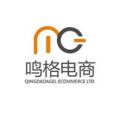How to operate a Taobao online store for drop shipping?
1.选择合适的商品和供应商:商家需要根据自己的经营范围和市场需求,选择具有优势的商品和供应商。在选择供应商时,需要注意商品的品质、价格、售后服务等方面,以确保商品能够满足顾客的需求。
2.设计合理的销售策略:商家需要根据自己的商品特点和市场需求,设计合理的销售策略。例如,可以通过设置不同的价格、优惠活动等,来吸引顾客下单购买。
3.建立良好的客户关系:商家需要建立良好的客户关系,与代发公司合作愉快,并提供及时、有效的售后服务。例如,可以定期与代发公司沟通协商货源、价格等问题,并及时处理客户反馈和投诉。
4.控制成本和提高效率:商家需要注意控制成本和提高效率,以提高盈利能力。例如,可以通过优化物流管理、提高采购效率等方式来降低成本,以提高销售额不变的情况下获得更多的利润空间。
Professional answer
1. Choose the right goods and suppliers: Merchants need to choose goods and suppliers with advantages according to their business scope and market demand. When choosing a supplier, you need to pay attention to the quality, price, after-sales service and other aspects of the goods to ensure that the goods can meet the needs of customers.
2. Design a reasonable sales strategy: Merchants need to design a reasonable sales strategy according to the characteristics of their goods and market demand. For example, you can attract customers to place orders by setting different prices, preferential activities, etc.
3. Establish good customer relationships: Merchants need to establish good customer relationships, cooperate happily with the drop shipping company, and provide timely and effective after-sales service. For example, you can regularly communicate and negotiate with the drop shipping company on issues such as supply and price, and handle customer feedback and complaints in a timely manner.
4. Control costs and improve efficiency: Merchants need to pay attention to controlling costs and improving efficiency to improve profitability. For example, you can reduce costs by optimizing logistics management and improving procurement efficiency, so as to increase sales and gain more profit space without changing sales.
Similar Q&A
recommend What is your experience of opening a Taobao store?
E-c News Continuously pushing e-commerce knowledge to you








Latest Q&A More
-
Do I need a trademark to open a franchise store on Pinduoduo to sell books?
#Pinduoduo#
-
How to withdraw from a Pinduoduo store
#Pinduoduo#
-
How to withdraw from Pinduoduo merchants
#Pinduoduo#
-
How to pay fees when closing a Pinduoduo store
#Pinduoduo#
-
How to withdraw from Pinduoduo
#Pinduoduo#
-
Which store on Pinduoduo is authentic?
#Pinduoduo#
-
Which stores on Pinduoduo can buy genuine products?
#Pinduoduo#
-
How to check the store under Pinduoduo
#Pinduoduo#
-
How to receive Pinduoduo online game products
#Pinduoduo#
-
How to sell the electronic version on Pinduoduo
#Pinduoduo#
E-c News 2025-10-17 05:12:36

- African netizens use China Africa cross-border e-commerce platform for online shopping
- how is the new seller of cross-border e-commerce doing?
- how can cross-border e-commerce Amazon sell on Amazon platform without goods?
- Amazon store opening process and cost analysis!
- Amazon plans to expand its pharmacy business on a large scale and will add same day delivery service
